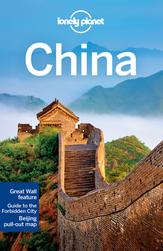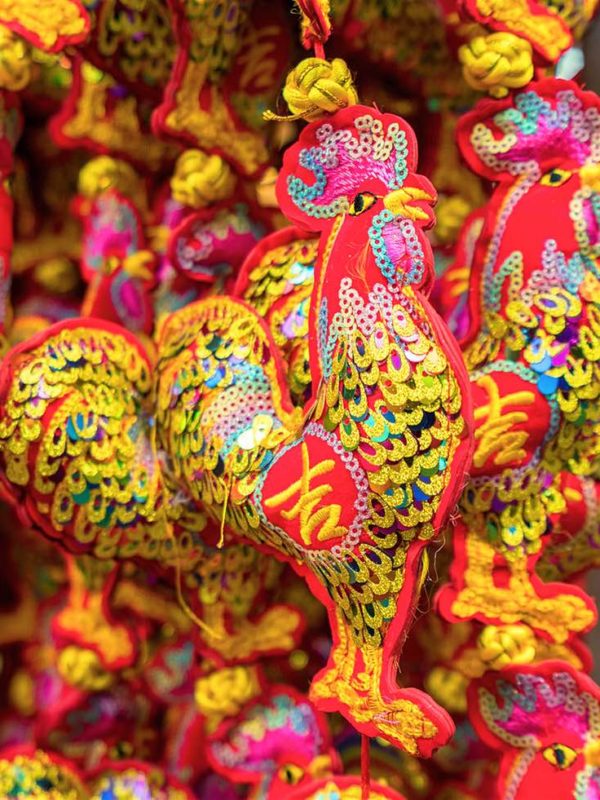This year, China welcomes the Rooster, crowing in the new year on 28 January 2017. The Rooster is the tenth animal in the Chinese zodiac (between the Monkey and Dog), and its arrival marks the 4714th New Year (also called Spring Festival) on the Chinese lunar calendar. Let that number sink in for a moment as you contemplate your cosmic insignificance!
Spring Festival is traditionally a family holiday, but there are plenty of ways for travellers to celebrate the Year of the Rooster, both in China and abroad. Here are eight tips for having the quintessential Chinese New Year experience.
 28 January 2017 marks the Year of the Rooster © CharlieTong / Getty
28 January 2017 marks the Year of the Rooster © CharlieTong / Getty
Get down with the Rooster
If you were born in 1957, 1969, 1981, 1993, or 2005 (you young chick, you!), then you are a Rooster, and this year is known as your běn mìng nián (本命年, the year of your Chinese zodiac animal). Other Roosters include such notables as the Confucian scholar Mencius, Rudyard Kipling, Amelia Earhart and Justin Timberlake. Folks born in the Year of the Rooster are resourceful, observant, hardworking, courageous and attention-seeking. The Rooster’s best love matches are the Ox and Snake (maybe not at the same time). Try this seasonal greeting to spread the new year love: Ji’nián jíxiáng (鸡年吉祥; Good luck for the Rooster year)!
Strange but true: Some scholars claim the Chinese zodiac animals are arranged in an odd-even order according to the claws or toes on each limb. (Yep, snakes don’t have toes, but the forked tongue counts as two).
 Dongyue Temple decorated in auspicious red fupai tokens for the temple fair © Megan Eaves / Lonely Planet
Dongyue Temple decorated in auspicious red fupai tokens for the temple fair © Megan Eaves / Lonely Planet
Visit a Beijing temple fair
During the first week of Spring Festival, Beijing’s temples and parks throw open their gates for miàohuì, folk spectacles that date back over a thousand years. Part religious shindig, part carnival, you can expect folk art, acrobats, puppet shows, sideshows, and more. Dongyue Temple’s fair is one of the most traditional, unfolding at a 700-year old Taoist temple, while the temple fair in Ditan Park has more plush-teddy sideshows than you can shake a sparkler at.
 The dragon dance is a traditional Chinese New Year performance © Kevin Frayer / Stringer / Getty
The dragon dance is a traditional Chinese New Year performance © Kevin Frayer / Stringer / Getty
Watch a lion or dragon dance
A tradition in south China, lion and dragon dancing have been a fixture of festivals a since the Tang dynasty. Closely related to kung fu, these dances demand strength, balance and poise. Dragon dances are performed by a troupe who work together to bring the dragon’s powerful yet graceful movements to life. In the past, rival lion dance troupes would battle each other to win prestige and money (known as ‘getting served’ in today’s street parlance). Look out for the troupe performing a manoeuvre called cǎi qīng, meaning ‘plucking the greens’. The lion swallows a wad of money but spits out the ‘greens’, blessing all with a Lion King-sized dose of good fortune.
Tip: luxury hotels in Guangzhou and Shenzhen, and Chinatowns the world over, are good places to catch these spectacles.
 Tangyuan – glutinous rice balls eaten during Spring Festival © IMAGEMORE Co, Ltd. / Getty
Tangyuan – glutinous rice balls eaten during Spring Festival © IMAGEMORE Co, Ltd. / Getty
Eat yourself lucky
Like any self-respecting festival, Chinese New Year is all about food. Increasingly, restaurants and hotels stay open for the traditional ‘reunion dinner’ on New Year’s Eve, so prepare to eat too much. A whole fish is a popular choice, as the Chinese word for fish (yú) sounds like the word for surplus, signifying you’ll have plenty of riches. Likewise, dumplings are an auspicious dish because they are said to look like silver ingots (it’s all about the money, honey). For an extra dose of good luck, wear red underwear. If you happen to have been born in the Year of the Rooster, you’d better wear them all year (multiple pairs on rotation permitted), as your běn mìng nián is believed to be a year of bad luck. Also, on New Year’s Day, don’t clean anything – even yourself – you’ll be washing away the good luck.
 Avoid Spring Festival travel chaos by flying close to New Year’s Day © China Photos / Stringer / Getty
Avoid Spring Festival travel chaos by flying close to New Year’s Day © China Photos / Stringer / Getty
Travel smart, and cheaply
Generally speaking, it is best to avoid domestic travel in China at all during the busy Spring Festival transport period known as chūnyùn. But if you fly on certain days – between January 28 and 31, when offices are closed and Chinese families hunker down together – it can be surprisingly cheap with few passengers, particularly on popular routes, such as Beijing to Shanghai. You should avoid trying to head to major cities by public transport anything later than five days before or after New Year’s Day, when millions of migrant workers make the mass migration home or back to work.
 New Year’s fireworks over the Bell Tower in Xi’an © powerofforever / Getty
New Year’s fireworks over the Bell Tower in Xi’an © powerofforever / Getty
Watch fireworks (at least three times)
In every village, town and city in mainland China, you can guarantee to see the skies ablaze with munitions, and have your eardrums assaulted by the machine gun rattle of firecrackers, at least three times during Chinese New Year – 27 January 27, 1 February and 11 February – so you’ve got plenty of opportunities to witness the free-for-all chaos. The first of these, New Year’s Eve, is the big one, reaching a crescendo at midnight, while the other two days – Chu Wu and the Lantern Festival – peak at about 9pm.
Factoid: the bangs and red flashes of fireworks are supposed to scare away Nian, a beast that emerges from its lair around the new year to wreak multifarious monstrous havoc. Boo, hiss.
 A colourful wonderland of neon sculptures at the Harbin Ice & Snow Festival © Eric Hevesy / Getty
A colourful wonderland of neon sculptures at the Harbin Ice & Snow Festival © Eric Hevesy / Getty
Head to Harbin for the Ice & Snow Festival
In China’s frigid far north, the city of Harbin has evolved a tradition of ice carving said to originate from fishermen freezing water in buckets to make ice lanterns. Fast forward a few hundred years to this psychedelic festival: palaces, towers, monuments and statues, all cut from ice, inset with neon lights and laid out on a town-sized scale. It’s a simple fact that hurtling down an ice slide shaped like the Great Wall is definitely the most fun you can have in -30°C weather. Travel around the Lantern Festival (11 February 2017) to snag cheaper flights.
 Jinli Ancient Street in Chengdu lit up for the Lantern Festival © kiszon pascal / Getty
Jinli Ancient Street in Chengdu lit up for the Lantern Festival © kiszon pascal / Getty
Live it up at the Lantern Festival
The 15th day of the Lunar New Year is the end, my friend, of the celebrations. But it’s also the new year’s beginning, the first full moon of the Rooster year. During the Lantern Festival (Yuánxiāo Jié), revellers visit temples carrying paper lanterns inscribed with riddles. At Shanghai’s Yuyuan Gardens & Bazaar, it’s a press of crowds and colour as themed lanterns of various shapes and styles are paraded through the grounds. The occasion is especially loved by kids – expect dancing, music and, of course, stack-loads of snacks. Try dumplings called tāngyuán – balls of rice flour filled with red bean paste or peanut butter, and served in a sweet soup. The round shape symbolises family togetherness, bringing happiness to all in the coming year.
Get more travel inspiration, tips and exclusive offers sent straight to your inbox with our weekly newsletter.


